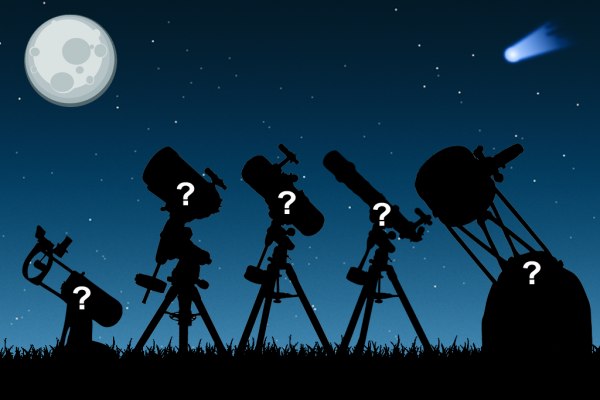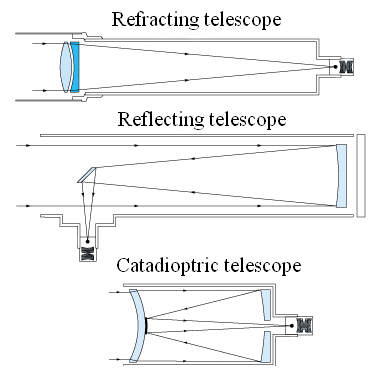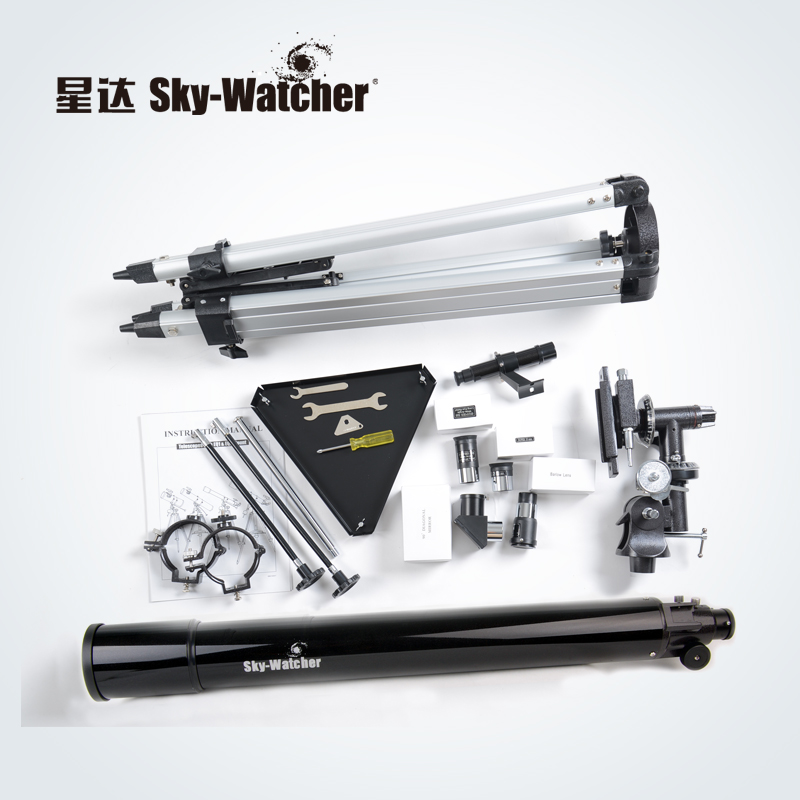When a novice astronomy lover realizes that besides reading astronomical literature and viewing photographs of the cosmos on the Internet, he still lacks something, the question of buying a telescope is acute. There are a lot of amateur telescopes on the market today, and making the right choice is not so easy. In this article I will try to tell you what you need to pay attention to when choosing a telescope.
The main characteristics of telescopes:
1.Optical scheme – lens (refractor), mirror (reflector), mirror-lens (catadioptric).
Lens telescopes (refractors)
In a lens telescope, an image is formed by several lenses of different types of glass. When using a diagonal mirror or an zenith prism, the image is direct, but mirror-like. When using erecting prisms (45 or 90 degrees), the image is completely straight. The lens telescope can be used for ground-based observations. Pros – a bright, contrasting picture, good light protection, unpretentious maintenance. Cons – high cost compared to a mirror telescope of the same aperture, residual chromatism (blue border around bright objects – planets, the Moon).
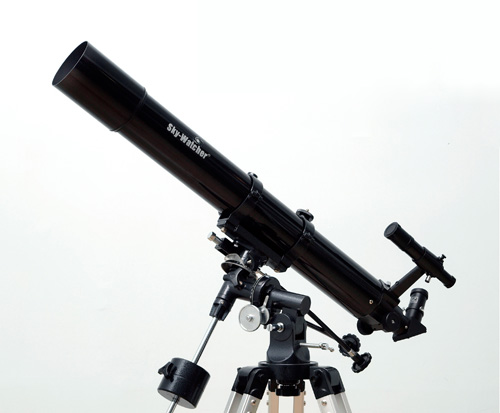
The larger the lens diameter of the refractor at the same focal length, the higher the chromatic aberration. For example, if you observe Jupiter through telescopes of the same diameter 70 mm and with different focal lengths (500 and 700 mm), then the color halo will be more noticeable in a telescope with a shorter focal length (500 mm). An example of such telescopes is Sky-Watcher BK705AZ2and Sky-Watcher BK707AZ2 .
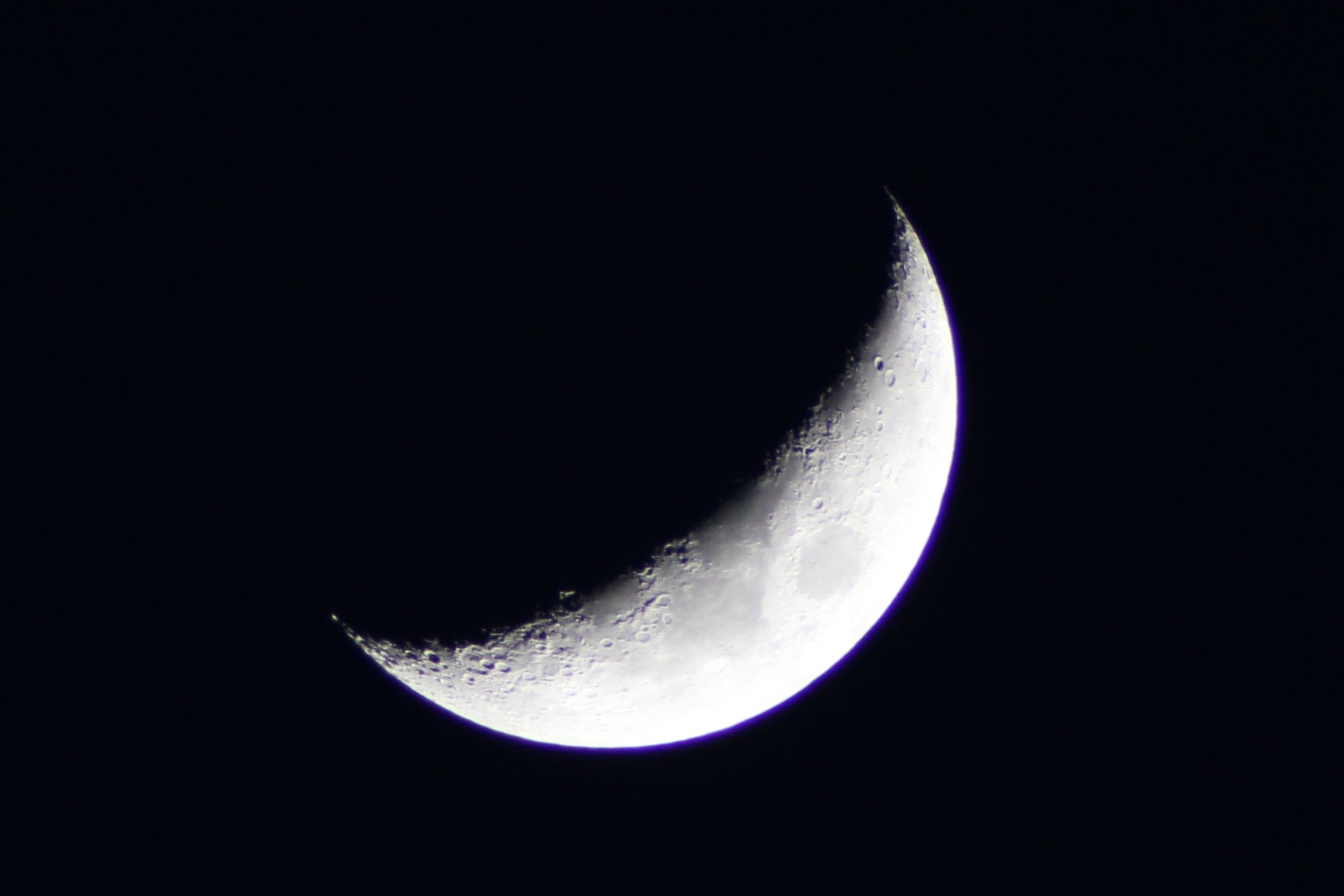
The ratio of the diameter of the telescope lens to the focal length is called the relative aperture of the telescope and is expressed as a fraction of the form D:F (for example, 1: 7 or 1/7).
Mirror telescopes (reflectors)
In mirror telescopes, only mirrors are used to form the image. Among amateur telescopes, the most widespread is Newton’s system. It uses the main concave mirror and an additional flat one. With relative holes of the telescope from 1: 7.7 … 1: 8, a spherical mirror can be used as the main mirror (for example, the Synta Sky-Watcher model BK1149EQ2).
The image in Newton’s specular telescopes is inverted. There are special erecting lens or prisms for Newton telescopes, but they are not used for astronomical observations. In addition, the diagonal mirror can interfere with daytime observations with a slight increase. Therefore, if you plan to use the telescope for ground-based observations, it is better to pay attention to the lens telescopes.
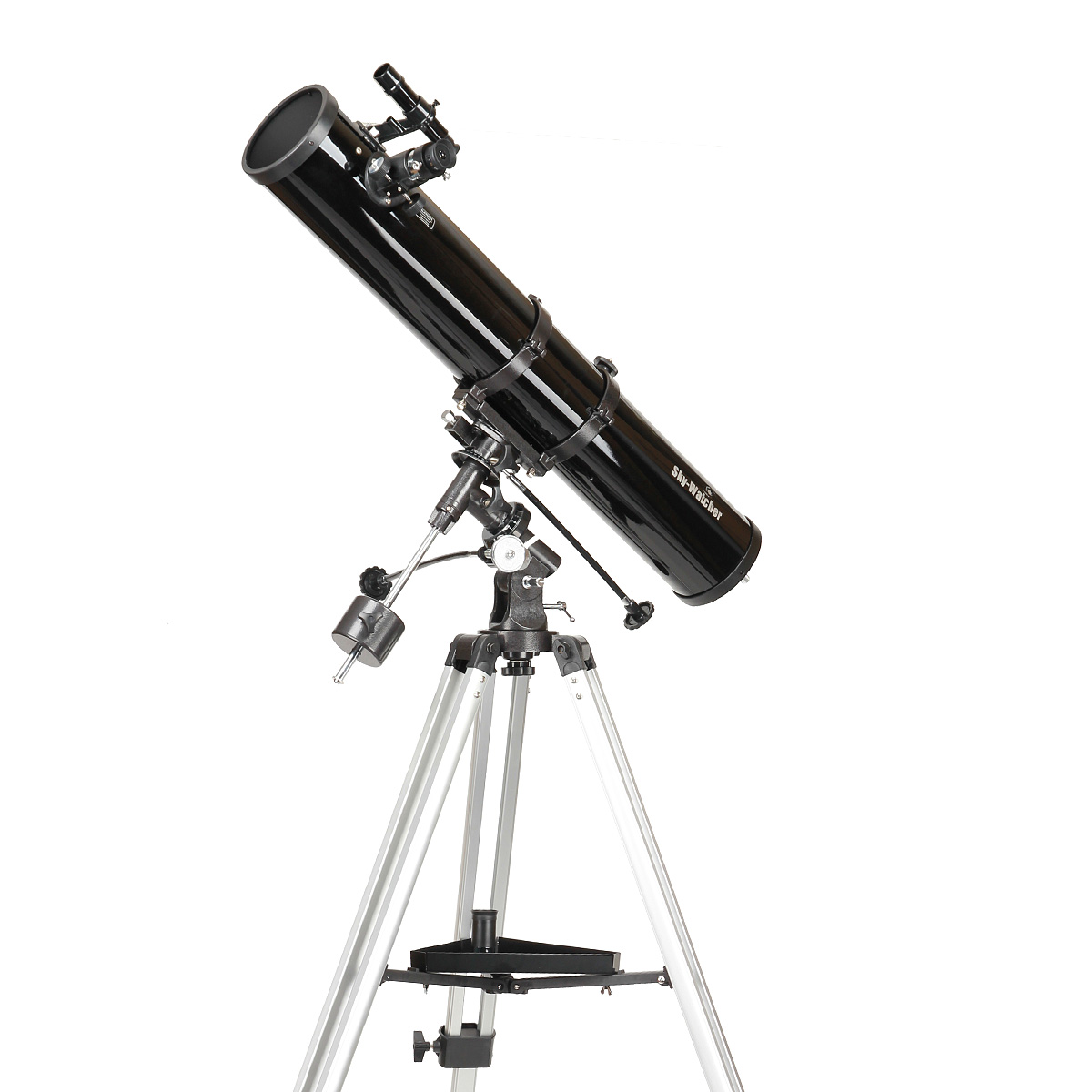
With relative apertures of 1: 4 … 1: 6.6, a parabolic mirror must be used, otherwise the image will suffer from spherical aberration (it will be blurred). Examples of telescopes with parabolic mirrors – Sky-Watcher BKP130650EQ2 , Sky-Watcher BKP150750EQ3-2, Celestron Omni XLT 150. Be careful of the Celestron Astromaster 130 EQ model – with a relative aperture of 1: 5 it uses a spherical mirror.
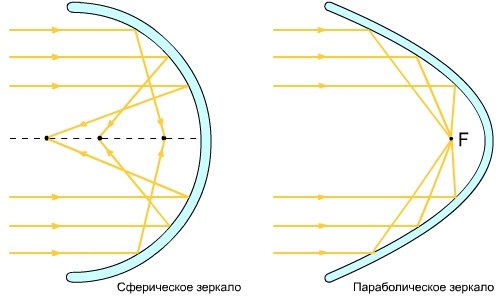
Mirror-lens telescopes (catadioptrics)
In the mirror-lens telescopes, the main mirror is a high-speed spherical, but its spherical aberration is corrected with a special corrector lens. In the telescopes of the Maksutov-Cassegrain and Schmidt-Cassegrain systems, a full-aperture corrector is used (that is, comparable in size to the main mirror). In the telescopes of the Klevtsov system, as well as in the telescopes VMC 110L of the company Vixen, a special sub-aperture corrector is used (less than the diameter of the main mirror). Telescopes of these schemes provide good image quality and are extremely compact.
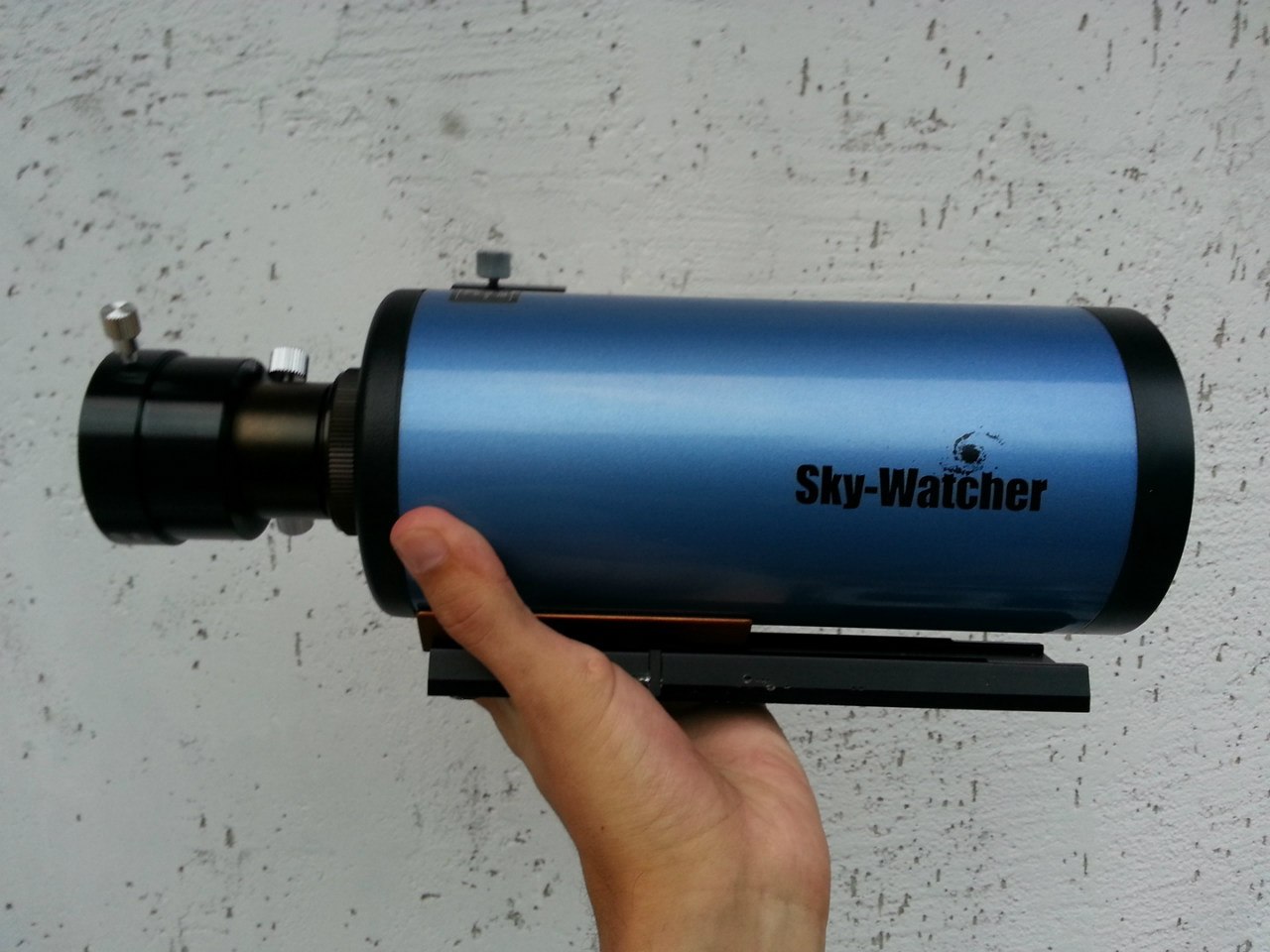
The telescopes of the Maksutov-Newton, Schmidt-Newton systems are less compact than the Cassegrains and coincide in size with the classical Newtons with the same characteristics. Nevertheless, they have some advantages – the absence of stretch marks securing the secondary mirror and the best degree of correction of aberrations.
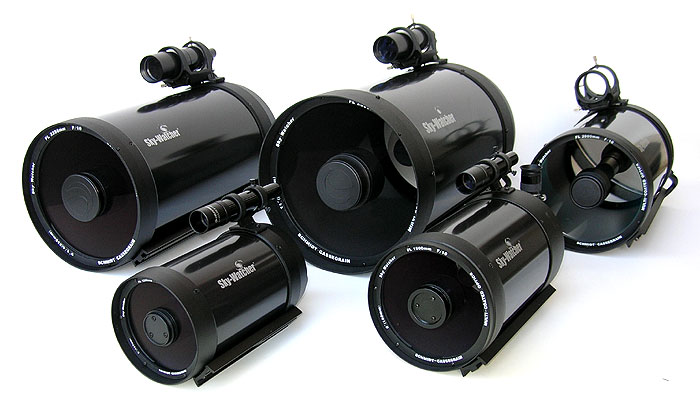
The disadvantages of mirror-lens telescopes include a large thermal stabilization time and the need for forced ventilation (starting with diameters of 150 mm). In the Schmidt-Cassegrain and Schmidt-Newton telescopes, the correction plate is very thin and fragile; therefore, such telescopes must be carefully protected from impacts. In Maksutov, the correction meniscus is noticeably thicker, but also heavier.
In the mirror-lens telescopes of the Cassegrain system, using a diagonal mirror or an zenith prism, the image is direct, but mirror-like. When using erecting prisms (45 or 90 degrees), the image is completely straight. However, due to poor light protection and the presence of central obstruction, mirror-lens telescopes form a less contrast image during ground-based observations than lens telescopes.
Separately, I would like to mention “high-aperture spherical Newtons with a corrector”, namely budget telescopes of the Bird-Jones system with a pre-focal corrector of spherical aberration. Alas, these telescopes do not provide a sufficiently high-quality image and hardly stretch the magnifications around 60-80x with possible 180-240x. Such telescopes should be avoided – for example, Sky-Watcher BK1141EQ1, Celestron Astromaster 114, Celestron Powerseeker 127 EQ, Meade StarNavigator 130, Levenhuk Skyline 120 × 1000 EQ. Be careful when choosing and buying a telescope! You can find the full black list in the corresponding article: https://www.star-hunter.ru/black-list/
2. The diameter of the lens (aperture) is the next important characteristic of a telescope. The larger the diameter of the telescope, the brighter the picture will be at the same magnification and the more detailed the celestial object will be visible. If you plan to buy a telescope with a diameter of 100mm, then it is better to take a telescope lens, if more than 100mm, then a mirror one is better. If you need a very compact version, then you can look at something from the mirror-lens models – for example, Sky-Watcher BK 102 Mak EQ2 .
3. Mount – this is what keeps the telescope optical tube. The mounts are azimuthal (moving up and down, left-right) and equatorial (the same azimuthal mount, but standing at an angle to the horizon). The equatorial mount is more convenient when observing / shooting the moon, planets, and you can also try to do neurotropic astrophotography. Dobson’s mount belongs to the azimuthal mount – such telescopes are not suitable for astrophoto. Also, there are azimuthal mount with auto-homing – suitable for astrophotographic planets \ Moon.
Some models of telescopes go for a mount that is too weak for them – for example, the Celestron Powerseeker 80 EQ model. For 70 mm aperture, this mount is quite sufficient (Celestron Powerseeker 70 EQ model), but for a aperture with a diameter of 80 mm, a more stable mount is recommended (for example, Sky-Watcher BK809EQ2 telescope ).
Of the budget models, the best are the Sky-Watcher BK707AZ2 (Meade Infinity 70, Celestron Powerseeker 70 AZ) refractors, as well as the Sky-Watcher BK767AZ1 reflector . They are lightweight, unpretentious to maintain and provide a sufficiently high-quality picture even at large magnifications (up to 140x).
The best models of the middle price category are Synta Sky-Watcher BK809EQ2, Synta Sky-Watcher BK909EQ2, Sky-Watcher BK909EQ3-2, mirror Synta Sky-Watcher BK1149EQ2, Synta Sky-Watcher BKP130650EQ2, Sky-Watcher BK Dob 6″, Meade Polaris 90, mirror-lens – Synta Sky-Watcher BK 90 Mak EQ1.
Separately, I want to mention the telescope refinery TAL-75R. Despite the small diameter of the lens (75 mm), this achromat refractor is equipped with a good 2-inch Crayford focus and a metal lens mount. By the disadvantages of this telescope I can include a table mount – it is highly desirable to purchase a C-57 refinery stand.
Of the more expensive models are good: the lens – Sky-Watcher BK1021EQ3-2, the mirror – Synta Sky-Watcher BKP150750EQ3-2, Sky-WatcherBKP1501EQ3-2, Sky-Watcher BKP130650AZGT, Celestron 130 SLT, зеркально-линзовые – Sky-Watcher BK 102 Mak EQ2, Sky-Watcher BK MAK102AZGT SynScan GOTO.
Well, for the most affluent beginners, I can advise the model Sky-Watcher BKP2001EQ5, Sky-Watcher BK Dob 8″, Sky-WatcherBK Dob 10″, Sky-Watcher BK Mak 127 EQ3-2, Sky-Watcher BK Mak 127AZGT (Celestron 127 SLT).
The location of the observation is also important when choosing a telescope.
Short-tube telescopes are best for the balcony – Synta Sky-Watcher BKP130650EQ2, Synta Sky-Watcher BK 90 Mak EQ1 and Sky-Watcher BK 102 Mak EQ2, BKP150750EQ3-2. The balcony should ideally look to the south. If to the north – look for another place of observation. Dobson and the balcony are incompatible things.
Any type of telescope will be suitable for observations from the yard, and with a small illumination it is desirable to have a maximum diameter.
For observations at dark places, it is better to take either a Dobson mirror telescope (Sky-Watcher BK Dob 8″, Sky-WatcherBK Dob 10″, Sky-Watcher Dob 12″ – maximum aperture for minimal money), or Newton on an equatorial mount (Synta Sky-Watcher BKP130650EQ2, Sky-Watcher BKP150750, Sky-WatcherBKP1501EQ3-2, Sky-Watcher BKP2001EQ5).
For the astrophoto of the Moon \ planets \ Suns – any telescope on an equatorial \ motor mount. Dobson without motors for astrophoto does not good.
For the novice level astrophotography of nebulae, any telescope at the equatorial mount will come down, if it is up to 120mm, a refractor, if 150mm and more, it is a reflector. Do not forget to purchase a set of motors to mount the telescope!
Well and, of course, we should not forget about the weight and dimensions of the telescope. On photos on the Internet, telescopes seem much smaller and lighter than they really are. So, for a child, a fragile girl, or an elderly person, a light compact telescope (refractor 70-80 mm, mirror-lens 90-102 mm), which can be transferred and assembled alone, is best suited. Remember: the best telescope is not the one that is the largest, but the one that is most often observed!
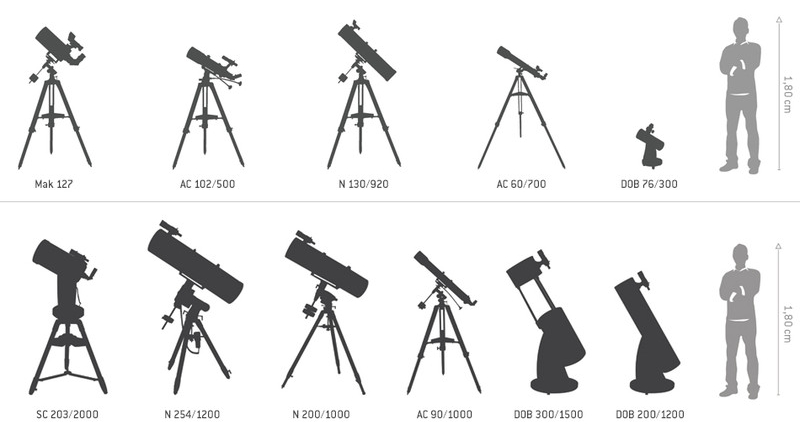
What to look for when buying a telescope.
In the shop:
1) External condition of the box. The box should not contain critical damage that could damage the telescope. Usually the packaging is strong enough, but if the box is damaged, and the telescope was brought by a courier or a transport company – demand that these damages be indicated on the receipt form and do not sign anything until you have checked the contents.
2) Optics condition. In the new telescope, the mirrors and lenses should be clean, without a significant amount of dust, fingerprints and streaks on the optics. To check it, it is enough to shine a flashlight into the lens of the telescope and all defects will immediately become visible.
3) The state of mechanics. All that can spin – should spin smoothly and without jamming. Inspect the tripod and pipe, there should be no mechanical damage (cracks, chips).
4) Completion – check that the kit contains all the accessories declared by the store or in the description – eyepieces, finder, adapters, handles of subtle movements, etc.
5) The efficiency of electronics. If the telescope has a remote control or electronics – apply power to them (batteries or an AC adapter), check that all buttons are pressed and working, and the motors are spinning.
When buying used from second hand.
– Try to buy in person, or to check and pick up the goods friends. No prepayments. It is better to go shopping with a friend or acquaintance – the “seller” may be a fraudster or a robber.
-If there are doubts about the purchase or the honesty of the seller – refuse to buy
-the usual cost of a used telescope is lower by 30 … 40% than its market value. If you are offered for 10 thousand a telescope, which costs 50 thousand in a store, this should be suspicious.
– for the rest, the recommendations are the same as when buying in a store, but only with the difference that dust,
I hope my article will help you make the right choice and your order will be a great tool that will delight you for many years! Have a good shopping!
